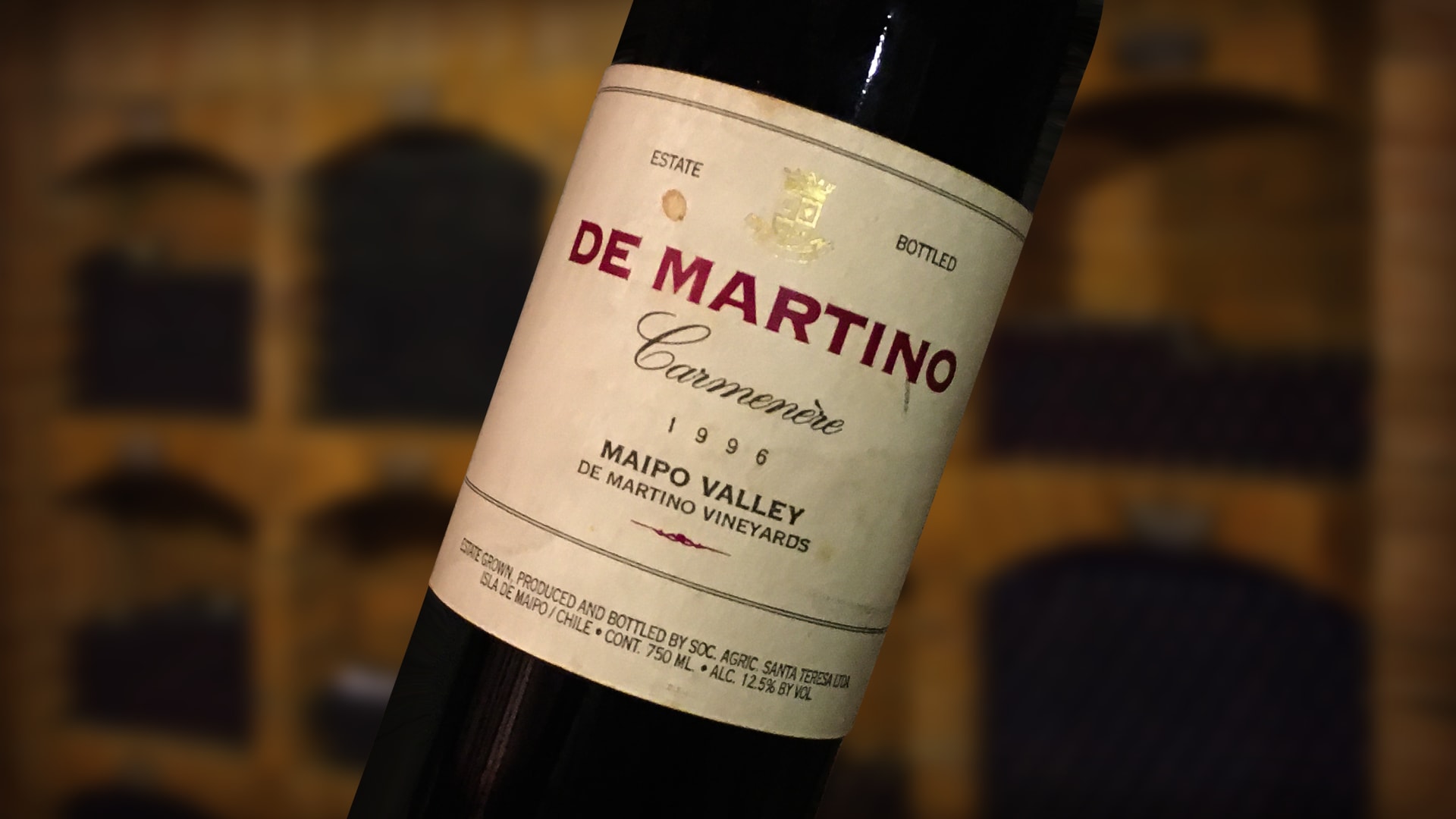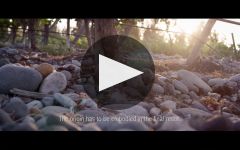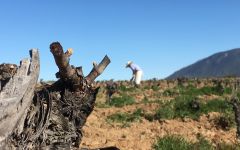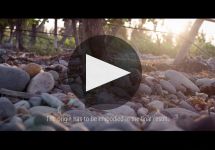De Martino Gallardia Cinsault Rose 2016
-
Robert
Parker



Product Details
Your Rating
Somm Note
Winemaker Notes
Professional Ratings
-
Robert Parker's Wine Advocate
I only tasted one rosé, the 2016 Gallardia del Itata Cinsault Rosé, a pale example designed as a summer wine to enjoy with food. This is bone dry and has enough body and freshness to stand up to food, something not so easy to achieve with Cinsault that has a tendency to drop in acidity if harvested too late. They use a vineyard close to the sea in search of that freshness; the vineyard is organically farmed and grows on granite soils. The maceration is very short, fermented with natural yeasts and without using any sulfur. It had some floral and balsamic aromas, subtle and elegant. The palate is electric with a strong granitic sensation, somehow dry and austere but very tasty. I wish more rosés where like this. 7,626 bottles were filled in November 2016.






Founded in Isla de Maipo (Chile), since 1934 the De Martino family has specialised in producing wines that reflect their origin and the character of each vineyard, based on solid principles of sustainable farming and traditional winemaking techniques. Today, the winery brings together the experience of the third generation of the family - represented by Pietro, Marco and Remo De Martino- with the dynamism and vision of Marco Antonio and Sebastián De Martino, the fourth generation. De Martino labelled and exported Chile’s first Carmenere in 1996 and was a pioneer winery working century-old vineyards in the Itata Valley, incorporating old winemaking techniques that set a precedent in South America.
On De Martino's tours, you can taste wines from Chile’s very diverse regions, try one of the world's best Carmenere wines and see the exciting process of wine creation. Just one hour from Santiago, a bilingual guide will explain the whole process of making our wines in a tour that starts with the work in the vineyards and goes through to bottling and ageing. You will also be able to find out about our innovative winemaking techniques in amphorae and foudres, methods that are unrivalled in Chile’s wine industry. This is the ideal opportunity to discover the best and most varied range produced in Chile.

Whether it’s playful and fun or savory and serious, most rosé today is not your grandmother’s White Zinfandel, though that category remains strong. Pink wine has recently become quite trendy, and this time around it’s commonly quite dry. Since the pigment in red wines comes from keeping fermenting juice in contact with the grape skins for an extended period, it follows that a pink wine can be made using just a brief period of skin contact—usually just a couple of days. The resulting color depends on grape variety and winemaking style, ranging from pale salmon to deep magenta.

Dramatic geographic and climatic changes from west to east make Chile an exciting frontier for wines of all styles. Chile’s entire western border is Pacific coastline, its center is composed of warm valleys and on its eastern border, are the soaring Andes Mountains.
Chile’s central valleys, sheltered by the costal ranges, and in some parts climbing the eastern slopes of the Andes, remain relatively warm and dry. The conditions are ideal for producing concentrated, full-bodied, aromatic reds rich in black and red fruits. The eponymous Aconcagua Valley—hot and dry—is home to intense red wines made from Cabernet Sauvignon, Syrah and Merlot.
The Maipo, Rapel, Curicó and Maule Valleys specialize in Cabernet and Bordeaux Blends as well as Carmenère, Chile’s unofficial signature grape.
Chilly breezes from the Antarctic Humboldt Current allow the coastal regions of Casablanca Valley and San Antonio Valley to focus on the cool climate loving varieties, Pinot Noir, Chardonnay and Sauvignon Blanc.
Chile’s Coquimbo region in the far north, containing the Elqui and Limari Valleys, historically focused solely on Pisco production. But here the minimal rainfall, intense sunlight and chilly ocean breezes allow success with Chardonnay and Pinot Noir. The up-and-coming southern regions of Bio Bio and Itata in the south make excellent Riesling, Chardonnay and Pinot Noir.
Spanish settlers, Juan Jufre and Diego Garcia de Cáceres, most likely brought Vitis vinifera (Europe’s wine producing vine species) to the Central Valley of Chile sometime in the 1550s. One fun fact about Chile is that its natural geographical borders have allowed it to avoid phylloxera and as a result, vines are often planted on their own rootstock rather than grafted.
